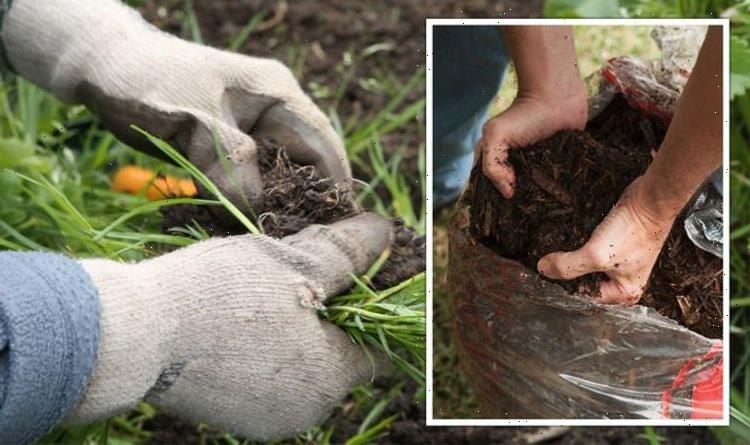Monty Don gives advice on how to keep weeds 'under control'
We use your sign-up to provide content in ways you’ve consented to and to improve our understanding of you. This may include adverts from us and 3rd parties based on our understanding. You can unsubscribe at any time. More info
The majority of the garden can benefit from mulching, including plants and borders. It can be especially useful during the winter months when added protection is needed. One of the biggest benefits from using mulch is that it can help to get rid of weeds.
Mulch could be garden compost, wood or bark chipping used to lay over the soil as a covering.
It could also be homemade leafmould, used from gathered leaves last year or the year previous.
Gardeners could also use homemade garden compost, which is a great all-round mulch, according to Gardeners’ World.
The experts said: “It’s great for retaining moisture, suppressing weeds and improving soil.


“Add kitchen scraps and chopped up garden waste to your compost bin and turn every few months. You should have usable compost between six and 12 months later.”
According to Gardeners’ World, applying mulch is easy.
The website said: “Simply lay five centimetres of your chosen mulch onto the bed or around key plants, without smothering them or damaging the lower stems.
“Bear in mind that a really thick layer of mulch will suppress more weeds, but bulbs and other plants will find it hard to grow through more than a five centimetre layer.
DON’T MISS:
Savvy mum transforms ‘cold’ kitchen into ‘chic’ and ‘stylish’ space [PICTURES]
Mrs Hinch fans share ‘trick’ to cleaning burnt pans – ‘don’t scrub!’ [COMMENT]
Family have ‘no regrets’ leaving city behind for rural living [EXPLAINER]
“Use your hands or a spade to add the mulch, depending on the material you choose. Finally, use a rake or hoe to make sure the mulch is evenly distributed.”
Before applying mulch, it is important to prepare the soil.
This means pulling up weeds to help prevent them growing back once the mulch is put down.
Gardeners’ World added: “Rake the surface of the soil to level out dips and hollows, then re-firm as necessary.

“Water thoroughly to ensure the soil is moist before applying the mulch, so the mulch keeps the water in the soil.”
Areas in the garden where gardeners can lay mulch includes around spring bulbs, under hedges and around fruit trees and bushes.
A regular mulch around fruit trees and bushes will help to suppress weeds and keep the plants healthy and resistant to pests and diseases.
Speaking to Express.co.uk, one expert shared the benefits of using mulch to suppress weeds.

Gonna Lorraine, gardening expert at Fantastic Services, said: “To manage weeds, mulch the soil.
“It blocks sunlight from weed seeds, inhibits their growth and helps retain moisture.
“Aerating your soil is a great way to get rid of pesky weeds. Many weeds flourish because the soil is compacted and restricts water, air and nutrients from getting in.”
Gardeners’ World expert Monty Don recently shared top tips on mulching on his blog, including the best time to do it.
Monty wrote: “The best time to put down mulch is whenever you get round to it, because the pros of a good organic mulch – which are weed suppression, moisture retention and improved social structure and fertility – always outweigh any cons such as suppressing ‘little treasure’ seedlings.
“However, we do try and mulch all our borders in January because this gives time in autumn for the borders to die back gracefully and allow birds to eat all seeds and berries but is early enough not to suppress the growth of bulbs such as alliums and tulips that start to appear by the end of February.
“Whenever you mulch the same rules apply.
“Use a well-rotted organic material such as mushroom compost, garden compost or bark chips and be generous with it.”
Source: Read Full Article
